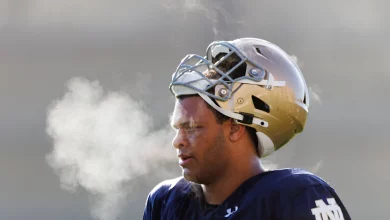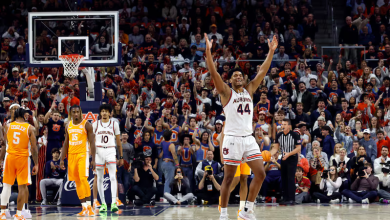Jon Scheyer faces concerns over roster depth, leadership, and player development as Duke basketball prepares for the 2025-26 season.

As the 2025-26 college basketball season approaches, the Duke Blue Devils, one of the most prestigious programs in NCAA history, are once again a team under intense scrutiny. Under the leadership of head coach Jon Scheyer, who has now moved into his third year at the helm, the Blue Devils face a new set of challenges and expectations. Following a relatively successful transition after Coach K’s retirement, Scheyer has been tasked with maintaining the program’s elite status while navigating a rapidly changing landscape in college basketball.
While Duke continues to attract top-tier recruits and remains one of the most talented teams in the country, several concerns have begun to emerge as the season draws closer. These issues will be crucial in determining whether Duke can once again compete for an ACC title and make a deep run in the NCAA Tournament.
This article will examine some of the biggest concerns for Jon Scheyer and the Duke basketball roster entering the 2025-26 season, focusing on areas such as roster depth, leadership, player development, and adapting to modern college basketball trends.
1. Roster Depth and Rotation Issues
Roster depth has been an ongoing concern for Duke in recent seasons, and heading into 2025-26, this issue has the potential to significantly impact the Blue Devils’ ability to compete on a national level. While Duke consistently recruits at a high level, the team has often faced challenges with balancing minutes and developing depth across all positions. In 2025-26, this concern appears to be no different.
One of the core issues regarding depth stems from the loss of experienced players, particularly those who have left early for the NBA Draft or transferred to other programs. Though Duke’s recruiting classes are often stacked with five-star talent, younger players may not always be ready to contribute immediately, leaving gaps in depth that could be exploited by more experienced teams.
The loss of veteran leadership, especially at key positions such as point guard and center, could create difficulties for Duke in terms of both execution and the ability to weather tough stretches during the season. Without a strong bench, Duke may struggle with injuries, foul trouble, or fatigue during long conference seasons or tournament runs.
Jon Scheyer will need to develop his younger players quickly to ensure that they can step in when called upon. Additionally, integrating new transfers or freshmen into the rotation while maintaining team chemistry is always a delicate balance, especially when considering Duke’s high expectations.
2. Leadership Vacuum and Transition Post-Coach K
Perhaps one of the most pressing concerns for Jon Scheyer and the Duke program entering the 2025-26 season is the continued adjustment to life after legendary coach Mike Krzyzewski (Coach K). While Coach K’s influence and legacy will always be felt at Duke, Scheyer must now carve out his own identity as head coach, and that involves cultivating new leaders on the roster.
During Coach K’s tenure, Duke was fortunate to have several vocal, experienced leaders on the floor — players like Grayson Allen, Zion Williamson, and Jahlil Okafor. These players were instrumental not only in their on-court production but also in keeping the team focused and motivated. However, since Scheyer’s arrival, the Blue Devils have struggled to find players who can fill that leadership void.
With players like Jeremy Roach and Kyle Filipowski, Duke has experienced a solid mix of veteran and young talent in recent years, but neither player has been able to step into the kind of leadership role that was once commonplace under Coach K. As the 2025-26 season approaches, Scheyer will need to identify players capable of leading both on and off the court, ensuring that the team has someone who can step up during crunch time, handle adversity, and lead by example.
Leadership is not just about vocal presence, however; it’s also about a player’s ability to bring their teammates together, hold others accountable, and maintain a winning mentality throughout the ups and downs of the season. If Scheyer cannot find a clear leader on his roster, the team may struggle in tight games or under pressure, ultimately affecting their ability to perform in key moments.
3. Adjusting to the Modern College Basketball Landscape
The landscape of college basketball has shifted dramatically in recent years, and Duke’s ability to adapt to these changes will be crucial in 2025-26. The introduction of the NIL (Name, Image, and Likeness) system, coupled with the ongoing evolution of the transfer portal, has changed the way programs recruit, build rosters, and develop players. For Duke, a program known for its elite recruiting classes, adapting to these changes will be a balancing act.
While Duke’s recruiting success has remained relatively unchanged under Jon Scheyer, the shift in college basketball dynamics means that more programs can now compete for top talent. Players are no longer as tethered to programs long-term, with the transfer portal providing an outlet for those seeking a change of scenery or increased playing time. This trend has resulted in Duke facing increased competition, not just from traditional rivals but also from schools that may not have been considered national contenders in the past.
Additionally, the rise of the NIL market creates an added layer of complexity to recruiting. While Duke remains a major player in the college basketball landscape, it now faces competition not only on the court but also in securing high-value NIL deals for its players. This could affect recruitment priorities, as well as the development of team chemistry, as players’ individual brand-building efforts become a more prominent factor in their decision-making process.
Jon Scheyer must continue to navigate these changes in a way that allows Duke to maintain its competitive edge without losing sight of the team-first mentality that has traditionally been a hallmark of the Blue Devils’ success. The ability to recruit top talent while also fostering a cohesive team dynamic will be a challenge, but it is one that Scheyer must rise to in order to keep Duke at the top of college basketball.
4. Player Development and Freshman Integration
Duke has long been known for its elite recruiting, but even with a roster full of highly ranked high school players, the team’s success hinges on effective player development. As the 2025-26 season approaches, Scheyer faces the task of developing several young players who will need to make significant contributions right away.
Freshmen players are often expected to perform at a high level in their first year at Duke, but there’s a fine line between expecting immediate impact and overwhelming them with expectations. In recent seasons, the Blue Devils have seen flashes of brilliance from freshman players like Paolo Banchero, AJ Griffin, and Tyrese Proctor, but they’ve also experienced struggles in terms of consistency, which is typical of young players adjusting to the college game.
For Jon Scheyer, it will be essential to manage the development of these young players carefully. While talent is abundant, the ability to translate that talent into on-court success, particularly in high-pressure situations, is what separates elite programs from the rest. Scheyer will need to ensure that freshmen are not only integrated into the system but also given the opportunities to develop into the players they’re expected to become.
Part of this development also includes ensuring that upperclassmen are ready to guide younger players through the inevitable growing pains. While Duke has produced top-tier talent in recent years, the Blue Devils’ success will largely depend on their ability to develop that talent into fully realized, high-performing athletes by the time the NCAA Tournament rolls around.
5. The Pressure to Compete at a National Level
The pressure to win at Duke is always immense, and as one of the most storied programs in college basketball history, the Blue Devils are expected to compete for championships every year. This expectation comes with a unique set of challenges, especially for Jon Scheyer, who is still in the early stages of his head coaching career.
Scheyer has the unenviable task of following in the footsteps of Mike Krzyzewski, one of the greatest coaches in college basketball history. The Duke faithful will always hold Scheyer to high standards, and while he has shown potential, the weight of expectations is something that cannot be overlooked.
In 2025-26, Scheyer’s primary concern will be ensuring that his team remains focused on the task at hand, despite the pressure to succeed. This includes balancing player egos, managing the expectations of the fanbase, and ensuring that his team doesn’t get distracted by outside noise.
While Duke has the talent to compete at the highest level, it will be up to Jon Scheyer to manage that talent effectively and keep his players focused on their ultimate goal: a national championship.
Navigating Challenges for Success
The 2025-26 season promises to be another exciting chapter in Duke basketball’s storied history, but it will also present Jon Scheyer with several key challenges. From roster depth and leadership issues to navigating the complexities of modern college basketball, the Blue Devils’ success will largely depend on how Scheyer manages these concerns.
As Duke enters the new season, the team remains one of the most talented in the country, but talent alone is not enough to guarantee success. Jon Scheyer will need to fine-tune his team, develop his young players, and find a way to build the leadership and chemistry necessary to compete for another national title.
If Scheyer can successfully navigate these challenges, Duke will once again be a force to be reckoned with on the national stage. The Blue Devils’ fans, who have grown accustomed to success, will eagerly watch as Jon Scheyer works to cement his own legacy at one of college basketball’s most prestigious programs.









